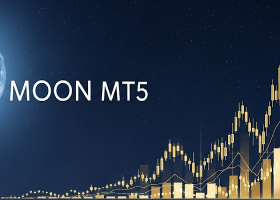China Celebrates New Year; Market Finds Other Worries - Analysis
With China out celebrating the week-long Lunar New Year holiday, the market was hoping to enjoy a few days of relative calm, but alas, this was not to be the case.
Instead, new concerns came to the forefront to rattle Monday, ranging from a U.S. stock tumble, to widening European yield spreads, to a North Korea rocket launch.
Chinese FX reserve data, released by the People's Bank of China Sunday ahead of the New Year holiday, showed that reserves fell by $99.5 billion in January, as PBOC sold dollars to prevent the yuan from sliding too far against amid persistent depreciation pressure
This was less than market estimates of a decline of $100 billion to $120 billion, but nevertheless, the second-largest reserve decline on record, after December's $107.9 billion drop, and took the reserves down to $3.23 trillion, the lowest since May 2012.
While China still maintains a sizeable war chest to defend the yuan should it choose to do so, many analysts pointed out that a few more months of $100 billion declines could leave the reserves looking less than adequate when viewed against metrics set out by the International Monetary Fund.
Breaching the $3 trillion mark could also be a psychological negative, after economists including Li Daokui, a former member of the PBOC's monetary policy committee (an advisory body that doesn't set policy), said reserves should stay above that level. See MNI Main Wire story at 7:16 am ET for further details.
On the U.S. equity front, the Nasdaq Composite, with its "high Beta" stocks fell to a low of 4,212.812, the lowest level since Oct. 16, 2014 (4,131.654 low). The Nasdaq Composite holds at 4,218 currently.
The market fretted a return to that month's low of 4,116.599, seen Oct. 15, 2014.
As a reminder, Oct. 15, 2014 was a day of larger capitulation which saw ten-year U.S. Treasury yields trade in a range of 1.873% to 2.29%.
Strategists at the time said that the 33 basis point move in yields was the worst since the Lehman crisis.
The S&P 500 closed at 1,862.49 Oct 15, 2014 and the CBOE's volatility index hit a high of 31.06, which at the time was the highest level seen since Nov. 29, 2011.
At the peak of turmoil Monday, the S&P 500 posted a low of 1,828.46 and the VIX a high of 27.72, which compare to the January 20 low/high of 1,812.29 and 32.09.
In addition to stocks, the market was watching the European yield curve, where like Japanese government bond yields, were turning more negative, and also keeping a close eye on European peripheral spreads.
"It is not just central banks that have set policy rates below zero, but the entire German curve out through eight years have negative yields," said analysts at Brown Brothers Harriman.
"Japan, which has the largest debt burden relative to GDP, has negative yields out through nine years; The Swiss curve is negative through 15 years," they said.
This is not solely the problem of core countries, BBH said, noting that Ireland, which will hold a general elections on February 26, has negative yields out four years.
And Spain, "which is struggling to put together a government following the election of last year, has negative rates through two-years," the analysts said.
Portugal, whose 2016 Budget was approved by the European Commission last week, saw its bond yields rise sharply Monday, even as Bund yields edged lower.
MNI fixed income reporters noted earlier that the spread between ten-year Portugal yields versus Bunds widened to 316 bps, the widest seen since Oct. 20, 2014 - to levels seen prior to the ECB announcing its QE program.
Jennifer McKeown, senior European economist at Capital Economics said "there is a significant threat" of Portugal being downgraded by the rating agencies."
"Fitch warned at the end of last month that any fiscal relaxation "could lead to negative ratings action," she said, reminding that "only one remaining agency (DBRS) deems Portuguese government debt to be of investment grade."
If DBRS downgrades Portugal government debt, then "those bond will no longer be eligible for purchase in the ECB's QE program or as collateral for cheap ECB bank loans, both of which have been key sources of support to the economy," McKeown pointed out.
In Asia, reports that North Korea successfully launched a rocket into space Sunday morning added to market jitters Monday, sending the yen flying higher.
The UN Security Council met Sunday and the UN News Center website says that the UNSC "strongly condemned" the launch and "announced that it will 'expeditiously' adopt a new resolution in response to 'these dangerous and serious violations.'"
The BBC reported that some suggest the missile range maybe as much as 13,000 kilometers (8,000 miles) which would be able to reach "any location in the continental U.S."
As to why test now, the BBC said "it seems likely that Kim Jong-un is seeking clear successes before his important Seventh Party Congress in May when he wants to appear to be the all-powerful leader of North Korea.
Also, that China has held six summit meetings with South Korea and none with North Korea may also be a factor prompting the launch, the report said.
The yen, already firm on recent larger unwinds of short positions, spiked even higher Monday, driven by lower U.S. Treasury yields and North Korea jitters, with dollar-yen taking out the prior 2016 lows near Y115.98 to test low levels last seen in November 2014.
Dollar-yen was trading at Y115.35, on the low side of a Y115.18 to Y117.53 range. As a reminder, the pair had topped out at Y121.69 only January 29.
A decisive break below the psychological Y115.00 mark, would suggest the pair was moving back into a Y110-Y115 range, traders said.


